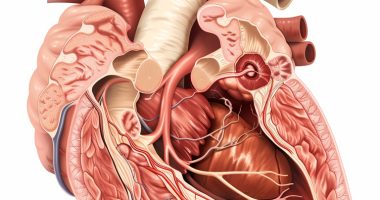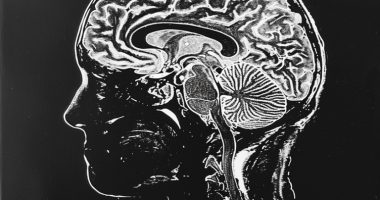Hearing loss
Definition
Hearing loss is a permanent hearing impairment that impairs the perception of sounds in the environment and speech communication. The degree of hearing loss can vary from slight to complete deafness. An otolaryngologist and an otoneurologist diagnose hearing loss using a set of tests. Depending on the form of hearing loss, conservative (hearing aids, physiotherapy, drug therapy) and surgical (tympanoplasty, myringoplasty, cochlear implantation, etc.) methods may be used. Hearing loss is a hearing loss in which speech communication is difficult. Deafness is a hearing loss in which the patient cannot hear words spoken loudly near their ear. The problem of deafness and hearing loss is significant due to its widespread prevalence.
Classification of hearing loss
There are classifications of hearing loss that consider the level of impairment, the degree of hearing loss, and the period over which the hearing loss develops.
Types of hearing loss depending on the level of the lesion:
- Conductive hearing loss.
Caused by an obstruction in the path of sound conduction and amplification. The obstruction occurs at the level of the outer ear (malformations, wax plugs, tumors, otitis media) or middle ear (traumatic damage to the eardrum and auditory ossicles, otitis media, adhesive otitis, tubular otitis, otosclerosis).
- Neurosensory hearing loss.
At the inner ear’s level, mechanical vibrations are converted into electrical impulses. The death of hair cells disrupts this process, resulting in impaired and distorted sound perception. Neurosensory hearing loss often decreases the pain threshold for sound perception. A healthy person’s pain threshold for sound perception is approximately 100 dB. Patients with sensorineural hearing loss may experience pain when hearing sounds slightly above the hearing threshold.
Neurosensory hearing loss can occur in microcirculatory disorders in the inner ear, Meniere’s disease (increased fluid pressure in the inner ear), pathology of the auditory nerve, etc. Some infectious diseases (measles, meningitis, epidemic mumps, AIDS) can cause sensorineural deafness. Very rarely, autoimmune diseases (Wegener’s granulomatosis) lead to the development of sensorineural hearing loss.
More than 60% of patients with congenital deafness and hearing loss develop hearing impairment due to the toxic effects of alcohol on the fetus in fetal alcohol syndrome. Every third child becomes deaf when infected with syphilis in utero.
Drugs can cause sensorineural hearing loss. Irreversible hearing loss occurs in several patients after taking aminoglycoside antibiotics. Irreversible hearing loss may occur with some diuretics, macrolide antibiotics, and non-steroidal anti-inflammatory drugs. The cause of the development of sensorineural deafness may be the impact of transportation, household and industrial noise, and intoxication of the body with lead, mercury, and carbon monoxide.
- Mixed hearing loss.
It develops when both conductive and sensorineural hearing loss co-occur. Complex hearing aids are often required to correct this type of hearing loss.
Types of hearing loss depending on the period of development of auditory impairment:
- Sudden deafness.
Hearing loss develops within a few hours. The cause of hearing loss in sudden deafness (sudden hearing loss) is exposure to several viruses (herpes, mumps, and measles viruses), circulatory disorders in the labyrinth, ototoxic effects of certain drugs, tumors, and trauma.
Sudden hearing loss is characterized by a high degree of hearing loss, up to complete deafness from the first hours of the illness. Approximately half of the patients self-cure within a few days after the onset of symptoms of sudden deafness. In several patients, hearing loss is irreversible. Both complete and partial recovery of hearing is possible.
- Acute hearing loss.
Hearing loss usually develops within a few days. If it lasts for more than seven days but less than one month, it is considered subacute hearing loss.
- Chronic hearing loss.
The patient’s hearing decreases gradually over months or even years. There are stable and progressive stages of chronic hearing loss.
All types of hearing loss can range from mild to total deafness.
Diagnosis of hearing loss
In diagnosing deafness and hearing loss, it is essential to determine more than just the degree of hearing loss. It is necessary to determine as accurately as possible the cause of the hearing loss, the level of damage, the persistence of the hearing loss, and its progression or regression. Preliminary recognition of deafness and severe hearing loss is not complex and is performed by an otolaryngologist. Speech audiometry (spoken and whispered speech) is used. If hearing loss is detected, consultation with an audiologist is necessary. Special equipment recognizes mild hearing loss (audiometers, tuning meters, etc.).
Audiometry and otoscopy differentiate between conductive hearing loss (damage to the sound conducting apparatus) and sensorineural hearing loss (pathology of the sound perception apparatus). In patients with conductive hearing loss, otoscopy may reveal perforations or scarring of the tympanic membrane. In some cases (scarring of the tympanic cavity, fusion of the stapes, malleus, and incus), no changes are detected on otoscopy.
A comparative assessment of air and bone conduction greatly assists in determining the differential diagnosis between conductive and sensorineural hearing loss. In conductive hearing loss, air conduction deteriorates, while bone conduction remains normal or even improves. Sensorineural hearing loss is characterized by deterioration of both air and bone conduction. The audiogram of a patient with conductive hearing loss shows a significant gap between the bone and air conduction lines, while the audiogram of a patient with sensorineural hearing loss shows the conduction lines merging.
To determine the localization of the level of auditory nerve damage and differential diagnosis between sensorineural and cortical (resulting from damage to the corresponding parts of the brain) deafness, an otoneurologist must be consulted. Special examinations (threshold audiometry, tone audiogram, auditory evoked potentials, etc.) are used.
Significant difficulties arise in detecting hearing loss and deafness in young children. Computerized audiometry and acoustic impedance testing of the middle ear are used to assess hearing status.
Treatment of hearing loss
Treatment of conductive hearing loss
Surgical treatment is usually required when the function or integrity of the auditory ossicles and tympanic membrane is compromised. Many surgical procedures can restore or significantly improve hearing (ossicle prosthetics, tympanoplasty, myringoplasty, etc.). In some cases, restoration of hearing is possible even in complete deafness. The type of surgical intervention is determined by the nature of the damage to the sound-conducting system.
Treatment of sensorineural hearing loss
The death of hair cells is irreversible regardless of the cause of their damage. It is impossible to correct the disorders by surgery. In the initial stages of the disease, with accurate diagnosis in some cases, drug therapy in combination with physiotherapy and electrical stimulation has a good effect. The only way of compensation in case of significant age of the disease, deafness, and severe bilateral sensorineural hearing loss was and still is hearing aids. The fitting and adjustment of the hearing aid are carried out by a hearing care professional.
Thanks to modern medical advances, surgical methods have been developed to treat sensorineural hearing loss, and cochlear implantation has become an alternative to hearing aids.
All these treatment options are available in various hospitals. For example, Auditory brainstem implantation can be done in Philippines for an approximate price of $12,4 K and in Colombia for $ 15,5 K.
Prevention of hearing loss
The primary preventive measure to prevent deafness and hearing loss is mass screening. Regular examinations are indicated for all workers in noisy industries and other categories of the population, which are included in high-risk groups. It is essential to detect signs of hearing loss in children promptly, as hearing impairment not detected in time may cause delayed speech formation and lag in intellectual development.

